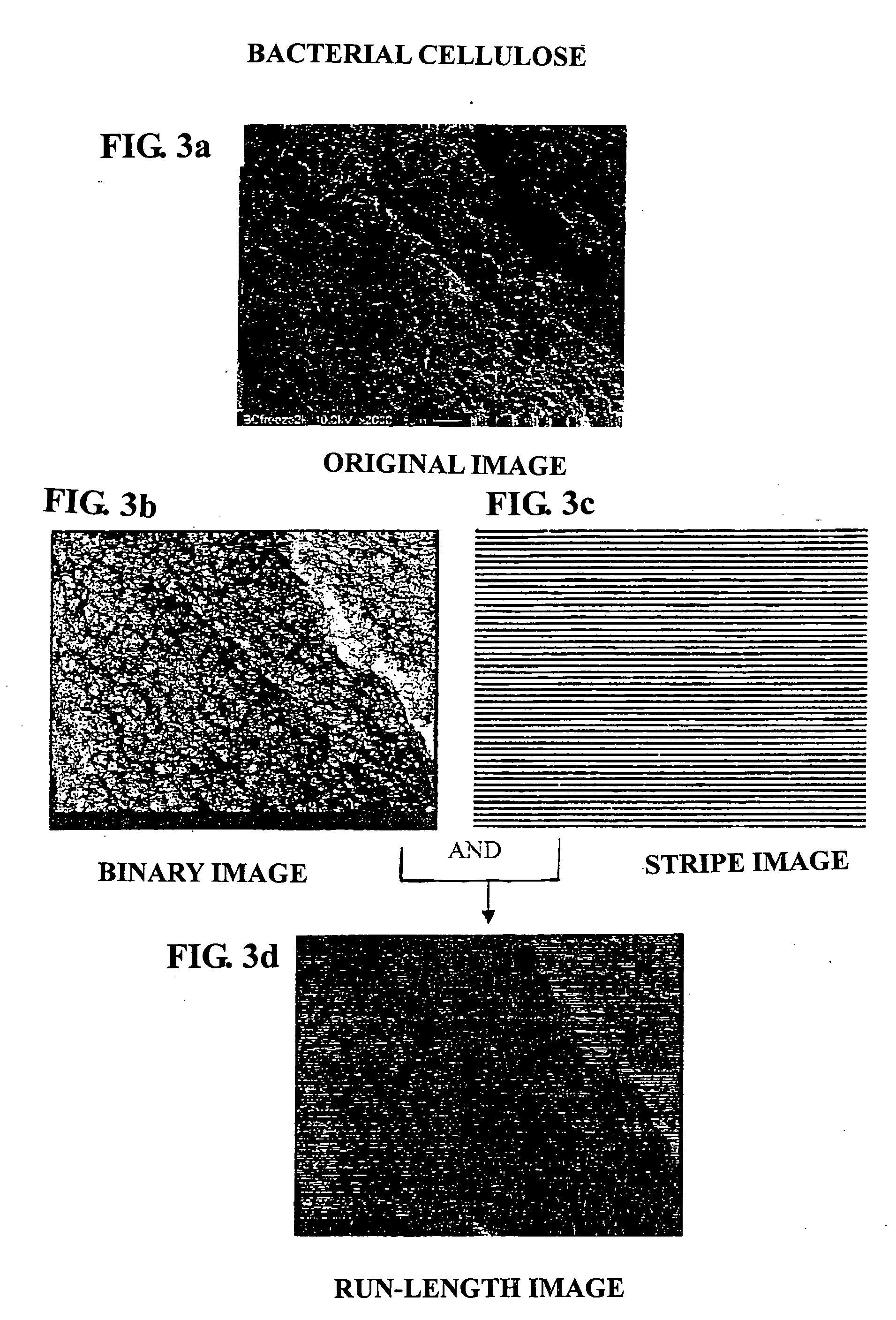Fiber-reinforced composite material, method for manufacturing the same and applications thereof
a composite material and fiber reinforcement technology, applied in the direction of dielectric characteristics, instruments, cellulosic plastic layered products, etc., can solve the problems of degradation of transparency of composite materials, disaggregated cellulose, and inability to obtain transparency, etc., to achieve superior transparency, superior flexural strength and flexural modulus, and superior transparency
- Summary
- Abstract
- Description
- Claims
- Application Information
AI Technical Summary
Benefits of technology
Problems solved by technology
Method used
Image
Examples
manufacturing example 1
Manufacturing of BC Sheet
[0238] After a culture fluid was added to a strain of acetic acid bacteria stored in a freeze-dried state, stationary culture was performed for 1 week (25 to 30° C.). On the surface of the culture fluid, bacterial cellulose was produced, and after a relatively thick part of the bacterial cellulose thus produced was selected, a small amount of a culture fluid of that strain was sampled and then added to a new culture fluid. Subsequently, this culture fluid was placed in a large incubator, followed by stationary culture for 7 to 30 days at 25 to 30° C. As the culture fluid, an aqueous solution (SH culture medium) having a pH of 5.0 adjusted by hydrochloric acid was used, containing 2 percent by weight of glucose, 0.5 percent by weight of bactoyeast extract, 0.5 percent by weight of bactopeptone, 0.27 percent by weight of disodium hydrogenphosphate, 0.115 percent by weight of citric acid, and 0.1 percent by weight of magnesium sulfate heptahydrate.
[0239] The ...
example 1
Analysis Example 1
[0243] In accordance with the image analysis method for evaluation of the ≧4.5 μm RL ratio, the ≧4.5 μm RL ratios in the longitudinal and the lateral directions were measured for the bacterial cellulose obtained in manufacturing example 1 and the disaggregated bacterial cellulose obtained in manufacturing example 2.
[0244]FIG. 3a shows an original image of the bacterial cellulose, FIG. 3b shows a binary image of the bacterial cellulose. This binary image was overlapped with a stripe image in FIG. 3c, so that a run-length image shown in FIG. 3d was obtained.
[0245]FIG. 4a shows an original image of the disaggregated bacterial cellulose, FIG. 4b shows a binary image of the disaggregated bacterial cellulose. This binary image was overlapped with a stripe image in FIG. 4c, so that a run-length image shown in FIG. 3d was obtained.
[0246] In the stripe images shown in FIGS. 3c and 4c, for the convenience of illustration in the figure, the line width was shown larger than...
manufacturing example 3
Manufacturing of MFC Sheet
[0250] Microfibrillated cellulose: After MFC (obtained by microfibrillation of nadelholz bleached kraft pulp (NBKP) using a high pressure homogenizer, having an average fiber diameter of 1 μm) was sufficiently stirred with water to prepare 7 kg of an aqueous suspension at a concentration of 1 percent by weight, this aqueous suspension was allowed to repeatedly pass between two rotating discs of a grinder (manufactured under the trade name “Pure Fine Mili KMG1-10” by Kurita Machinery Mfg. Co., Ltd.) from the center to the outside 30 times (30 passes), the two discs being almost in contact with each other and at the disc revolution speed of 120 rpm.
[0251] From Nano MFC (average fiber diameter of 60 nm) obtained by the grinding treatment, an aqueous suspension at a concentration of 0.2 percent by weight was prepared, followed by filtration using a glass filter, and film formation was performed. This film was dried at 55° C., so that a Nano MFC sheet having a...
PUM
| Property | Measurement | Unit |
|---|---|---|
| thickness | aaaaa | aaaaa |
| light transmittance | aaaaa | aaaaa |
| thickness | aaaaa | aaaaa |
Abstract
Description
Claims
Application Information
 Login to View More
Login to View More - R&D
- Intellectual Property
- Life Sciences
- Materials
- Tech Scout
- Unparalleled Data Quality
- Higher Quality Content
- 60% Fewer Hallucinations
Browse by: Latest US Patents, China's latest patents, Technical Efficacy Thesaurus, Application Domain, Technology Topic, Popular Technical Reports.
© 2025 PatSnap. All rights reserved.Legal|Privacy policy|Modern Slavery Act Transparency Statement|Sitemap|About US| Contact US: help@patsnap.com



